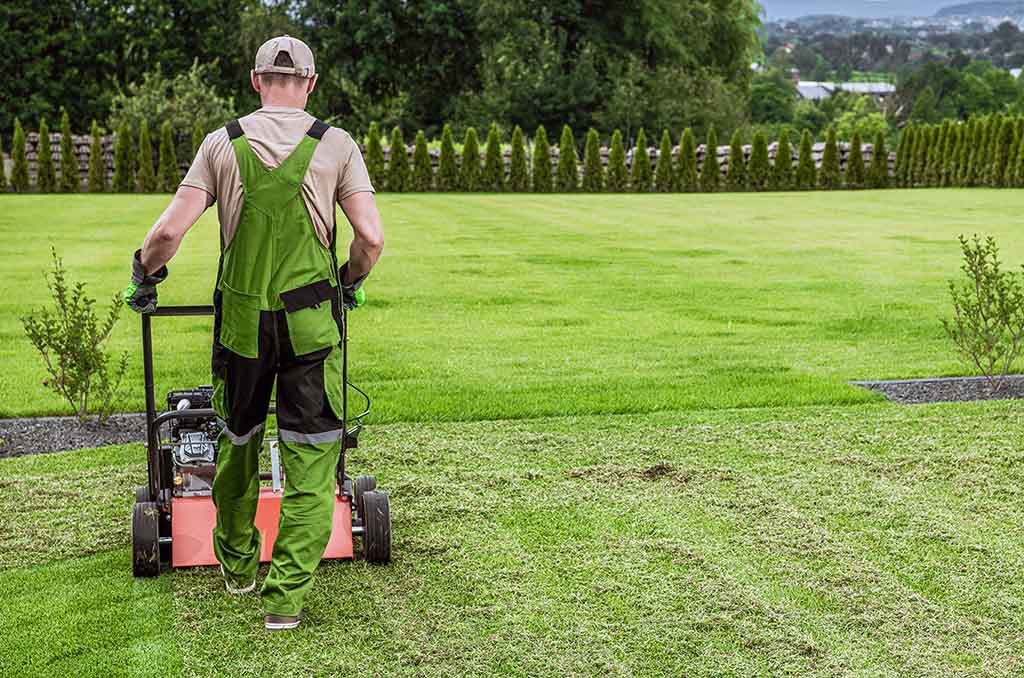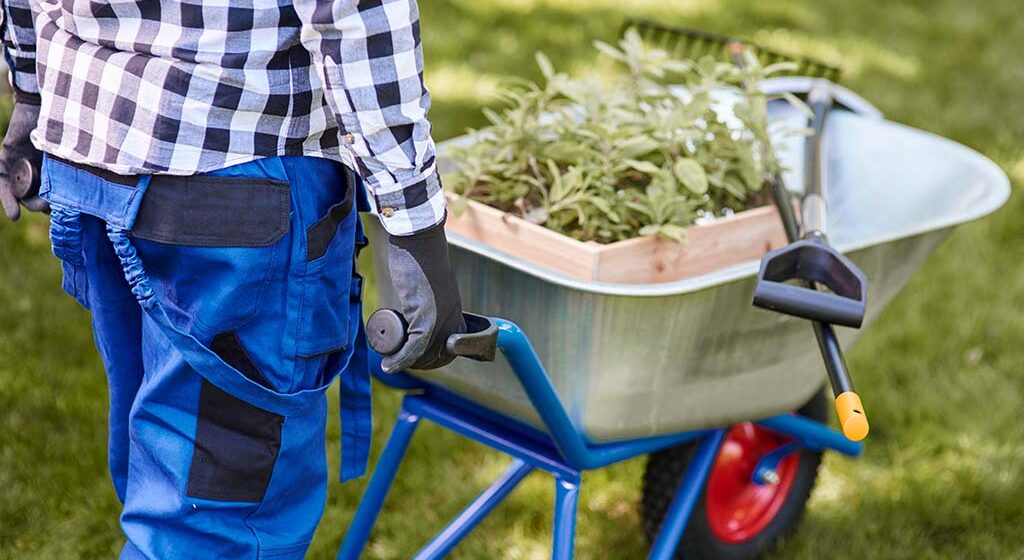Gardening is a rewarding profession, offering the freedom to work outdoors, manage your own schedule, and build a thriving business. However, one of the biggest challenges for self-employed gardeners and small businesses is deciding how much to charge for their services. Set your prices too low, and you may struggle to make a living; too high, and you risk losing potential clients.
For sole traders, seasonal gardeners, and small businesses, one of the most important yet tricky parts of running a gardening business is setting the right rates. Charge too little, and you may not cover your costs. Charge too much, and you risk pricing yourself out of work. In this guide, we’ll walk through industry averages, income expectations, and tips for setting fair, competitive prices that reflect the true value of your services.
How much do gardeners earn?

On average, qualified self-employed gardeners in the UK with 10 or more years of experience are targeting around £270 per day in 2024, up from £258 in 2023. This equates to approximately £36 per hour, based on 7.5 chargeable hours per day.
It’s worth noting that this isn’t pure take-home pay, it reflects the cost of running a gardening business, which includes tools, insurance, vehicle upkeep, training, fuel, and more. Gardeners can expect around 25% of their annual turnover to go towards these business expenses.
Your actual earnings will vary depending on your level of experience, services offered, region, and how many months of the year you’re actively working, since income typically dips during the winter.
How much do gardeners charge on average in the UK?
If you’re deciding how much to charge, it’s useful to understand what gardeners typically cost clients. Rates depend on factors like the size of the job, location, and whether the work is general maintenance or more skilled labour.
For clients hiring a gardener, the average hourly rate is between £25 and £36, depending on whether it’s a one-off job or a regular contract. Gardeners may charge more for specialised work or if the job involves significant travel, use of high-risk equipment, or tasks requiring specific qualifications.
Here are average hourly rates for various gardening services in 2025:
- Landscape design: £100/hr
- Garden levelling: £140 (per job, equipment included)
- Lawn mowing & general maintenance: £20/hr
- Weeding: £30/hr
- Tree trimming: £60/hr
- Planting flowers: £35/hr
Prices may also vary by region, the complexity of the job, and the type of service, routine vs. specialist, for example.
Average hourly rate for gardeners
Hourly rates are most commonly used for regular maintenance or smaller one-off jobs. The national average falls between £25 and £36 per hour depending on experience and type of service.
Charging by the hour works well when the job duration isn’t easily defined in advance. However, it’s crucial to be transparent with clients and provide an estimate beforehand to avoid misunderstandings. Also, ensure your hourly rate accounts for time spent on non-billable activities like travel, quoting, and tool maintenance.
Average day rate for gardeners
For full-day bookings or larger jobs, such as full garden clearances or landscaping, many gardeners prefer to charge a day rate. Based on current data, a qualified, experienced gardener in 2024/2025 may charge around £270 per day, though rates typically range from £150 to £300 depending on location and services included.
A day rate is often more convenient for both the gardener and the client and can offer better value overall. Just make sure to define what’s included in your daily rate, such as equipment, waste removal, or travel.
Considerations in how much to charge as a gardener?

Setting your rates as a self-employed gardener involves more than just matching the going rate in your area, it’s about building a sustainable business that covers your costs and rewards your expertise. Your pricing should reflect the true cost of running your business, your level of experience, and the value you provide to clients.
Here are key considerations when working out how much to charge:
Understand your costs
Factor in all your business outgoings such as tools, fuel, vehicle maintenance, insurance, licensing, protective clothing, waste disposal, and marketing. Your rate should ensure these are covered, with room for growth.
Research the market
Look into what other local gardeners charge for similar services. This helps you stay competitive and gives you a benchmark to work from.
Reflect your experience and skill
If you have qualifications, specialist knowledge (like plant care or landscaping), or use high-grade equipment, your pricing should reflect that added value.
Consider demand and availability
If you’re consistently busy or booked in advance, that may be a sign you can increase your rates slightly. High demand justifies higher pricing.
Include a profit margin
Don’t just break even. You’re running a business, so ensure your prices include a profit margin to make your work financially worthwhile.
Set a minimum charge for small jobs
Many gardeners set a minimum call-out fee to account for travel time, set-up, and overheads, especially for quick or one-off tasks.
Review rates regularly
Reassess your pricing at least once a year to keep up with inflation, rising costs, and changes in demand.
By taking all of these into account, you’ll be in a strong position to set fair and confident rates that support both your livelihood and your professional reputation.
Winter vs. Summer – Seasonal income
Gardening is a highly seasonal profession, with peak demand in spring and summer. Many gardeners find they can charge higher rates during these months due to increased demand. However, the average income can drop by up to 37% during winter, primarily due to shorter days, poor weather, and fewer garden-related tasks. To maintain earnings in the off-season, consider offering additional services such as:
- Winter pruning: Many trees and shrubs require pruning in colder months.
- Fence and shed repairs: Structural garden maintenance is in demand year-round.
- Leaf clearance and composting: Many clients still need garden upkeep during autumn and winter.
By diversifying your services, you can generate a more consistent income throughout the year.
Setting up a gardening business & startup cost

If you’re launching a gardening business, it’s important to plan for some upfront investment. Basic startup costs may include:
- Tools & equipment: £500 – £2,000+
- Vehicle (van or trailer): £2,000 – £10,000 (used)
- Insurance (public liability, tools): £100 – £300 annually
- Marketing (website, flyers, signage): £200 – £1,000
- Licences (waste carrier, pesticide handling): Variable
Starting small with essential tools and reinvesting as you grow can help manage costs effectively.
Additional pricing considerations
Beyond your standard rates, you may need to factor in additional costs to ensure your business remains profitable. Some key considerations include:
- Travel expenses: If you’re travelling long distances, charging for fuel and time can be necessary.
- Package deals: Offering regular clients discounted rates for ongoing maintenance can provide steady work.
- Waste disposal: If you remove garden waste, charging an additional fee can cover disposal costs.
- Cancellation fees: A cancellation policy ensures you don’t lose income from last-minute changes.
Being transparent about these costs with clients helps build trust and prevents misunderstandings. Setting the right price as a gardener is crucial for building a sustainable business. Understanding industry rates, factoring in your costs, and adjusting prices based on demand can help ensure profitability.
Whether you charge hourly, daily, or per project, always ensure your pricing reflects your expertise, time, and expenses. Regularly reviewing your rates and diversifying services can also help you maintain a steady income year-round. By charging confidently and fairly, you can grow a thriving gardening business while providing excellent value to your clients.
Sources:
https://www.bark.com/en/gb/gardeners/gardener-price-guide/
https://www.thegardenersguild.co.uk/2024_gardener_hourly_rates_garden_maintenance.html
Get Gardeners' Insurance from Protectivity
*Disclaimer – This blog has been created as general information and should not be taken as advice. Make sure you have the correct level of insurance for your requirements and always review policy documentation. Information is factually accurate at the time of publishing but may have become out of date.
Last updated by

















